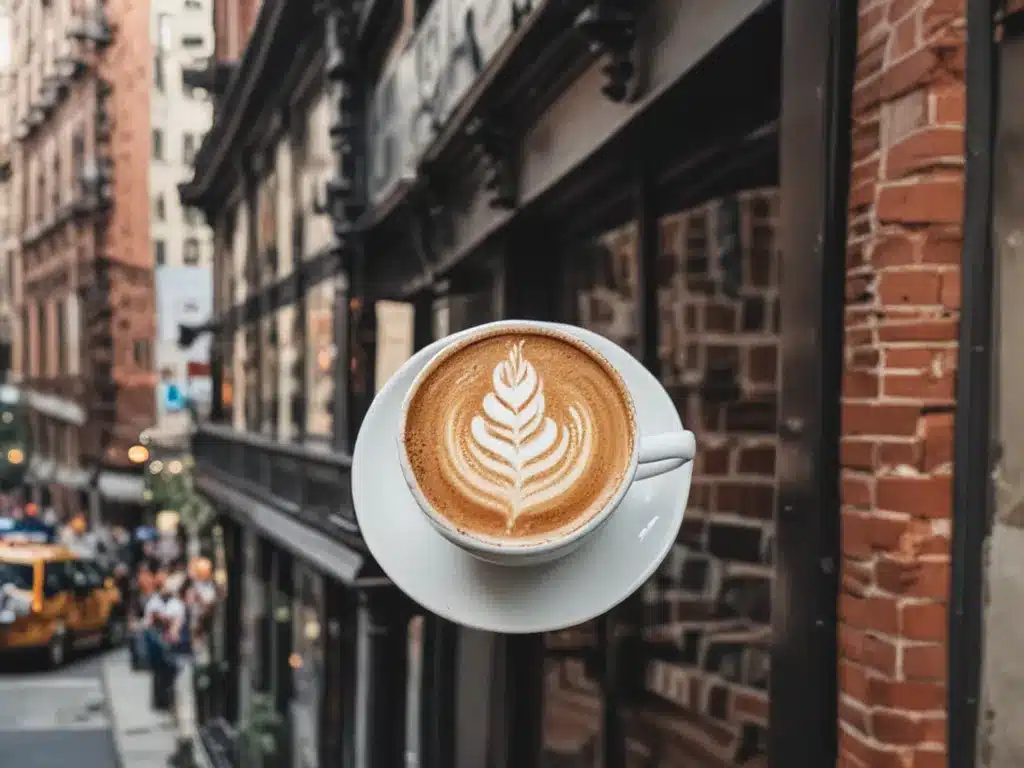
New York City (NYC) has played a pivotal role in America’s coffee culture. As early immigrants established neighborhoods in the late 19th century, small independent coffee shops and iconic ** diners began serving up morning cups of joe. Over subsequent decades, regional roasters and national chains emerged to satisfy the city’s growing demand for caffeine. Today, NYC remains on the cutting edge of specialty coffee** trends through its pioneering cafes, world-class roasting scenes, and innovations in brewing methods.
The Origins of Coffee Culture in NYC
In the 1850s, European immigrants fleeing poverty and political unrest arrived in droves at New York’s bustling ports. Many settled in neighborhoods like Little Italy and Chinatown, establishing tight-knit ethnic communities. Within these new immigrant enclaves, small cafes and corner grocery stores soon emerged to serve the needs of the local population. For Europeans accustomed to the daily ritual of cafe culture, these modest establishments offered a taste of home, brewing comforting cups of espresso and percolated coffee to energize laborers through long work days.
As more immigrants poured into the city in subsequent decades, their demand helped coffee evolve from an exotic import to an everyday American beverage. Early roasters like the Great Atlantic & Pacific Tea Company (A&P) started selling affordable canned ground coffee on grocery shelves nationwide. Meanwhile, saloons rebranded as “coffeehouses” to attract more patrons and less criticism amid rising temperance movements. These pioneering shops introduced working-class New Yorkers to coffee as a mid-day pick-me-up rather than just a morning drink.
By the turn of the 20th century, coffee had firmly taken root in the daily lives of city residents. Corner grocers stocked over fifty coffee brands, while elegant cafe terraces lining Broadway sipped espresso alongside fashionable elites. New York even earned its first “coffee exchange” to set commercial prices for the burgeoning industry. Whether savored at home, corner delis, or exclusive cafes, coffee proved vital to fueling the ambitious energy pulsing through America’s largest metropolis.
Specialty Coffee Arrives in NYC
During the post-war economic boom of the 1950s, increased trade and travel connectivity enabled specialty coffee trends to emerge. European-trained barristas began establishing NYC’s earliest “third wave” cafes, replicating the rituals of milk frothing and intricate espresso-based beverages they had experienced abroad. Pioneering shops like Caffe Reggio in Greenwich Village and Joselito’s in SoHo gained cult followings for their dedication to quality ** Arabica beans and meticulous brewing techniques.
Meanwhile, gourmet food lovers were importing exclusive coffee varieties previously unavailable in America. Roasters like Toddy Branca and Buon Italia paved the way for a specialty scene by hand-roasting small batches with painstaking precision. Their savvy marketing touted specialty coffees as luxury indulgences comparable to fine wines or chocolates. This emphasis on exotic origins and complex tasting notes helped establish NYC as a vanguard of the fledgling specialty coffee movement nationwide.
As aficionados flocked to the newest roasteries and cafes, publications like the New York Times began profiling innovative shops pushing coffee’s boundaries. In 1963, the Times proudly declared Manhattan home to over 300 coffeehouses frequented by “beats, bohemians and beatniks.” By normalizing coffee as an artisanal product and social experience, these pioneering businesses laid the foundation for the diverse specialty scene NYC enjoys today.
The Rise of Iconic NYC Coffee Chains
Throughout the growth of local independent cafes, national chains also took root in New York starting in the 1970s. Chains streamlined the cumbersome process of roasting, distributing, and operating multiple cafe locations across vast regions. Their drive-thru and espresso-based formats capitalized on Americans’ burgeoning mobility and work-on-the-go lifestyles. Iconic brands like Starbucks, Dunkin’, and Tim Hortons swiftly grew to dominate the urban caffeine market through aggressive franchising.
While independent shops retained cult followings among connoisseurs, chains made specialty coffee widely accessible through consistent quality and convenience. Starbucks in particular helped introduce the American mainstream to premium roasted beans and elaborate mixed coffee beverages previously foreign outside Europe. New Yorkers who had only known percolated diner coffee quickly took to the novel experiences of window-browsing display cases and chatting over cappuccinos. By the 1990s, chains had thoroughly saturated street corners with familiar logos, helping establish coffee as an ubiquitous part of city culture.
| Coffee Chain | Date Opened First NYC Location | Current NYC Locations |
|-|-|-|-|
| Starbucks | 1994 | Over 400 locations|
|Dunkin’ | 1963 | Over 1000 locations|
|Tim Hortons| 1996 | Over 20 locations|
National chains accelerated coffee’s mass market adoption in New York while independent shops kept the regional specialty scene progressing. This balanced dynamic still shapes the diverse coffee culture New Yorkers enjoy today.
Contemporary NYC Coffee Innovation
Driven by constant new waves of curious and creative residents, New York remains on the forefront of progressing coffee. Specialty shops push methods like pour over, Aeropress, and Chemex to extract maximum flavor complexity from single-origin beans. Experimental microlots address eco-certified growing regions and tasting profiles with unprecedented nuance. Meanwhile, cafes integrate cafe culture more holistically into neighborhoods through vibrant community spaces, inviting patrons to linger over notebooks or conversations.
Roasters like Gimme! Coffee, Joefx, and Parlor Coffee lead the nation in identifying emerging growing regions and debuting exclusive microlots. Their wholesale partnerships supply America’s leading third-wave shops while developing scores of passionate local baristas. New brew labs even focus solely on advancing equipment innovation through novel prototypes. Whether training ambitious entrepreneurs or sourcing pioneering lots, New York nurtures coffee’s most ambitious visionaries.
Nowhere showcases contemporary coffee trends more vividly than the various annual events held in NYC. The Big Apple Coffee Festival brings roasters, importers and brewing gear makers together for tastings and demos. Meanwhile, “Cupping Tuesdays” at geocuisinebayridge.com offer intimate evaluations of new harvests with industry experts. These hands-on experiences establish New York as a pilgrimage site where aficionados can witness cutting-edge coffee firsthand. Through relentless creativity, the city remains poised to lead coffee into its brightest future.



















